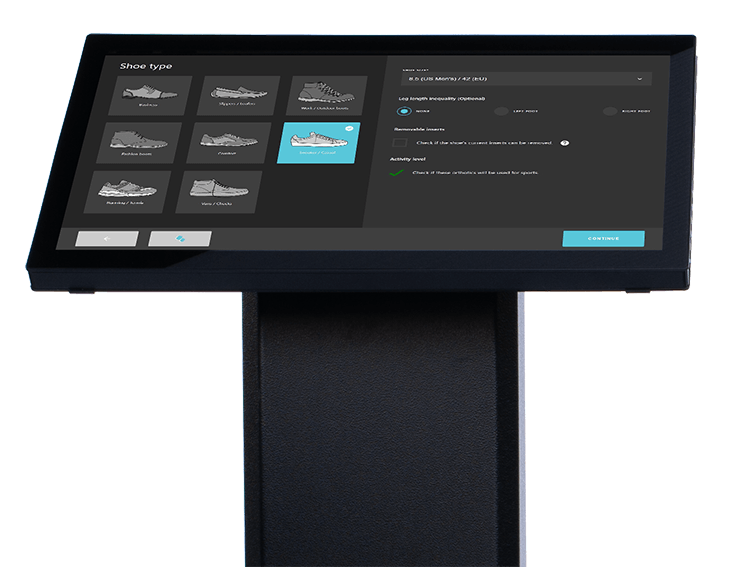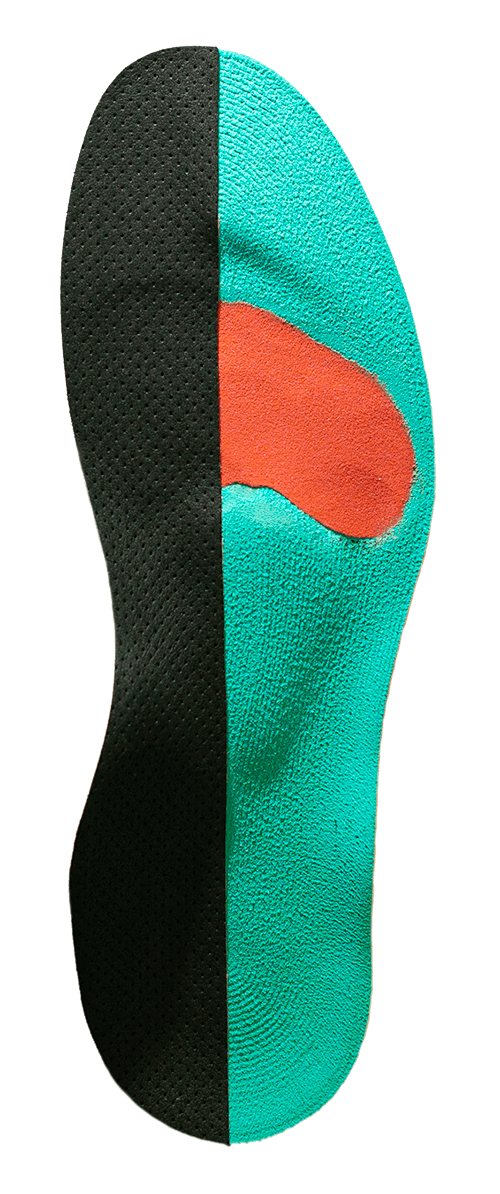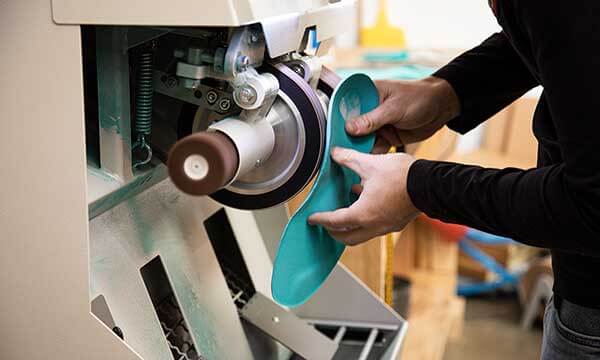
Orthotic configuration
The pedics terminal can also be used to configure custom orthotics based on the biometric data from the assessment.
A streamlined process from the assessment to the delivery of the custom orthotic. It has never been more convenient to provide custom orthotics to your patients!

"What are Sensorimotor Orthotics?"
The term originates from the sensorimotor system, which includes the sensory organs (eyes, ears, skin), parts of the nervous system, and the body's motor controls. This system serves as the body's learning mechanism for movement.
Our Sensorimotor Orthotics are specially designed to stimulate receptors in the foot (the sensory aspect), which in turn send signals to the nervous system, triggering a muscle response (the motor aspect).
With the comprehensive information we gather about the patient's dynamic movement, static balance, proprioception, and lower extremity alignments, we are able to pinpoint the precise areas in the foot that require stimulation to induce a muscle response, realigning the foot and affected joints, making it easier for the nervous system to execute movement.
Sensorimotor Orthotics should not be compared to regular orthotics, as they function as training devices aimed at achieving perfectly aligned sequences of movements. Our primary focus is on ensuring unrestricted movement for every joint in the foot. This is because our Sensorimotor Orthotics are designed to increase muscle tonicity, allowing the body to correct misalignments itself. Whereas conventional orthotics often work like braces and tend to reduce muscle activity.
The unique attribute of our sensorimotor orthotics makes them well-suited for addressing orthopedic issues, managing pain, enhancing sports performance, and preventing injuries. By promoting proper movement patterns and muscle activation, our orthotics contribute to improved functionality and overall well-being.
Data-driven orthotic design
The pedics assessment and the subsequent orthotic configuration process were specifically designed with the goal to gather all relevant information needed to craft highly custom orthotics.
Our specialists use this wealth of data to get a clear picture of the individual indication before designing the appropriate orthotic. We pride ourselves with the most sophisticated setup in the industry.

Orthotic production
Our orthotics are crafted by our specialists in the orthotic lab and shipped to the practitioners. It is a true custom product that is made-to-order and individually designed for each patient.
Use the pedics platform to manage everything related to your orthotic orders, from payments to invoices.







